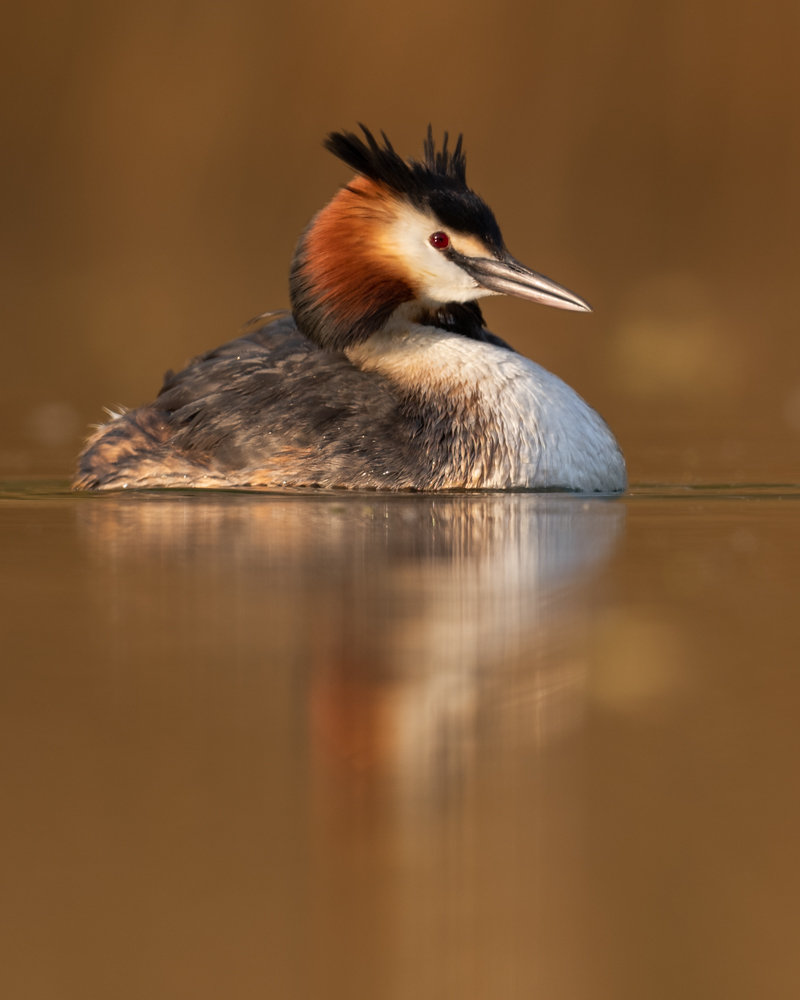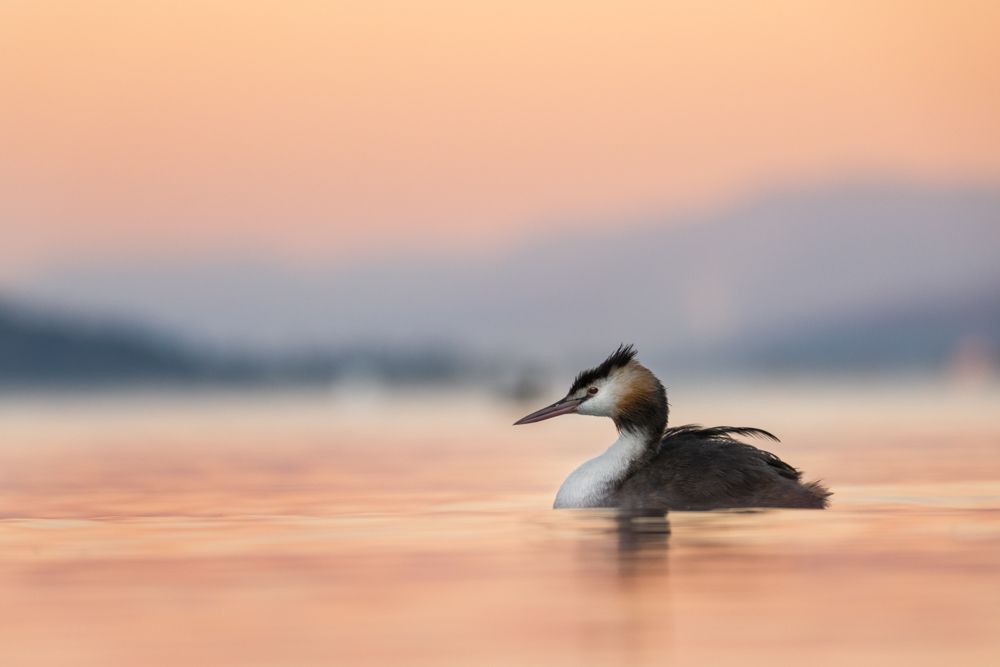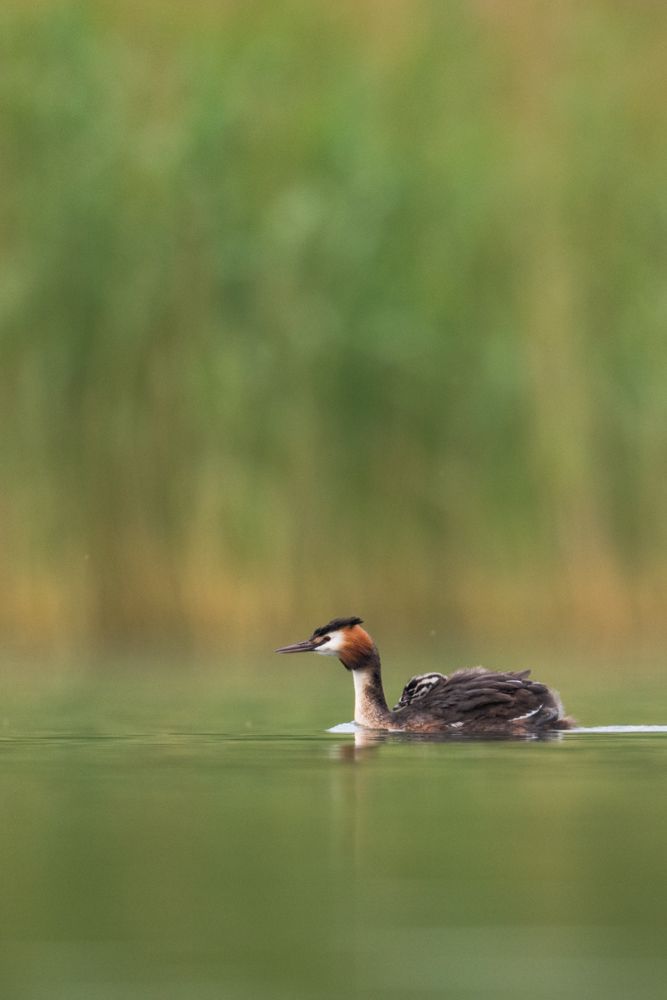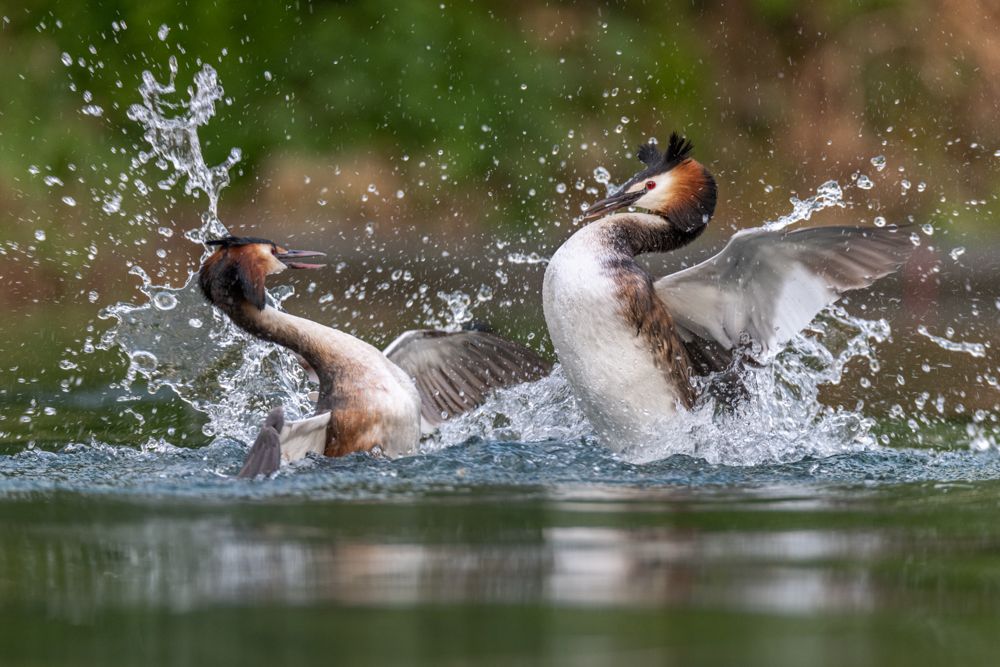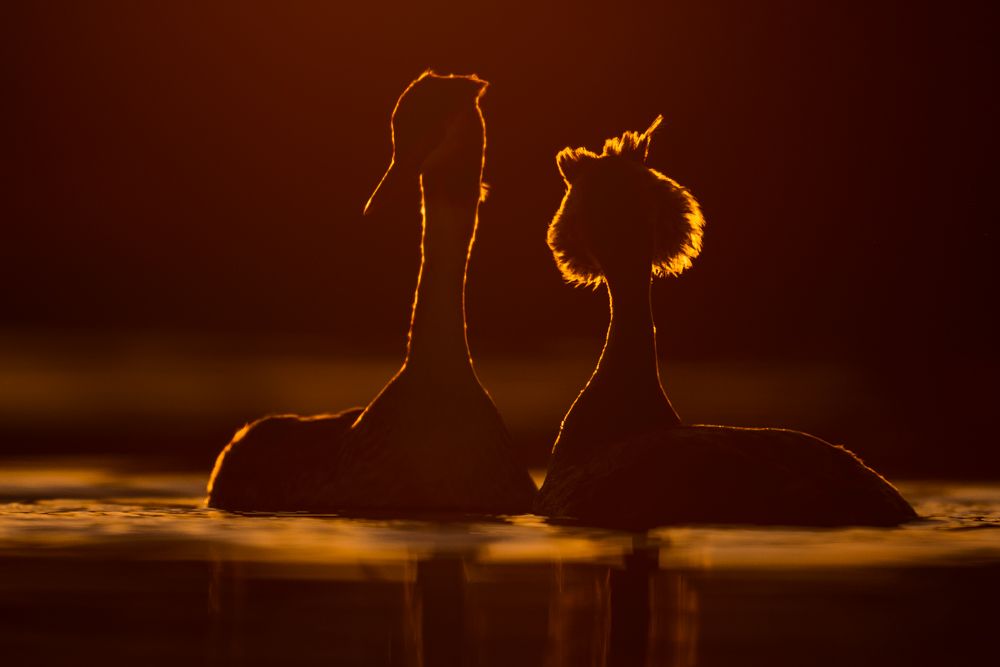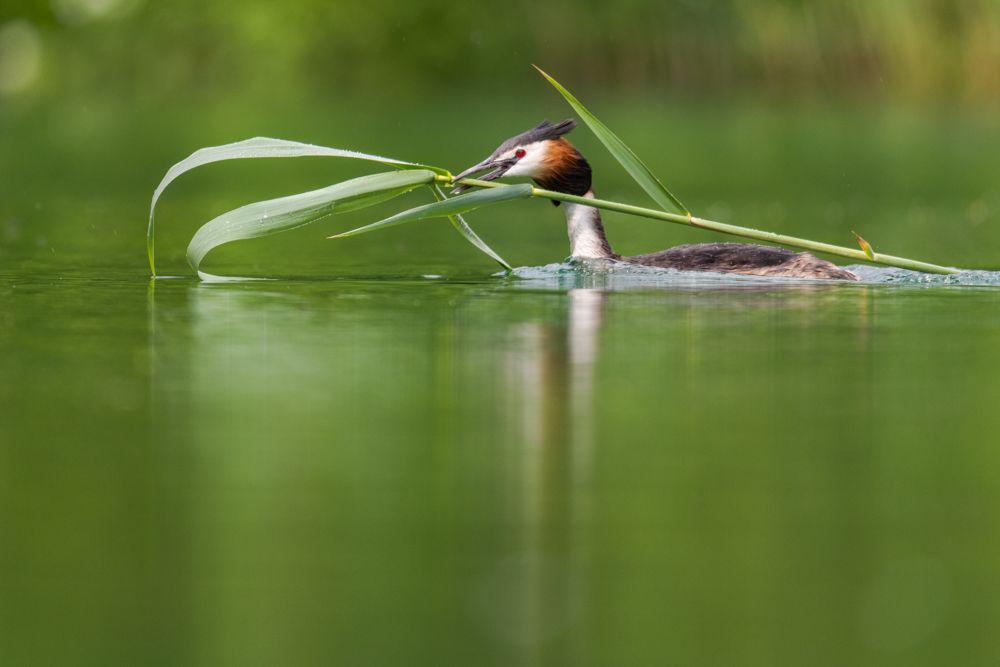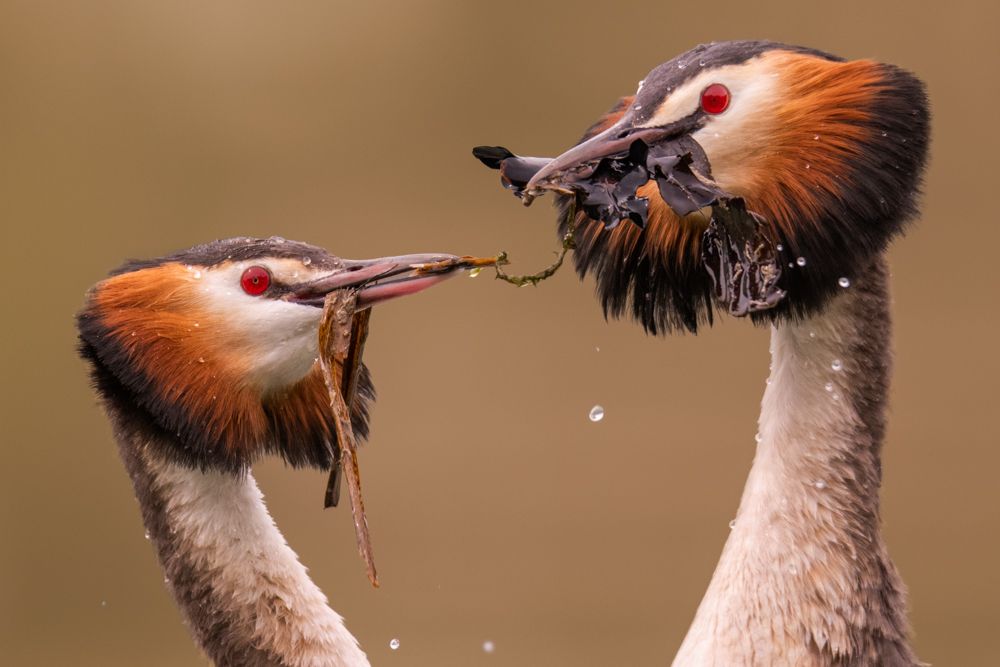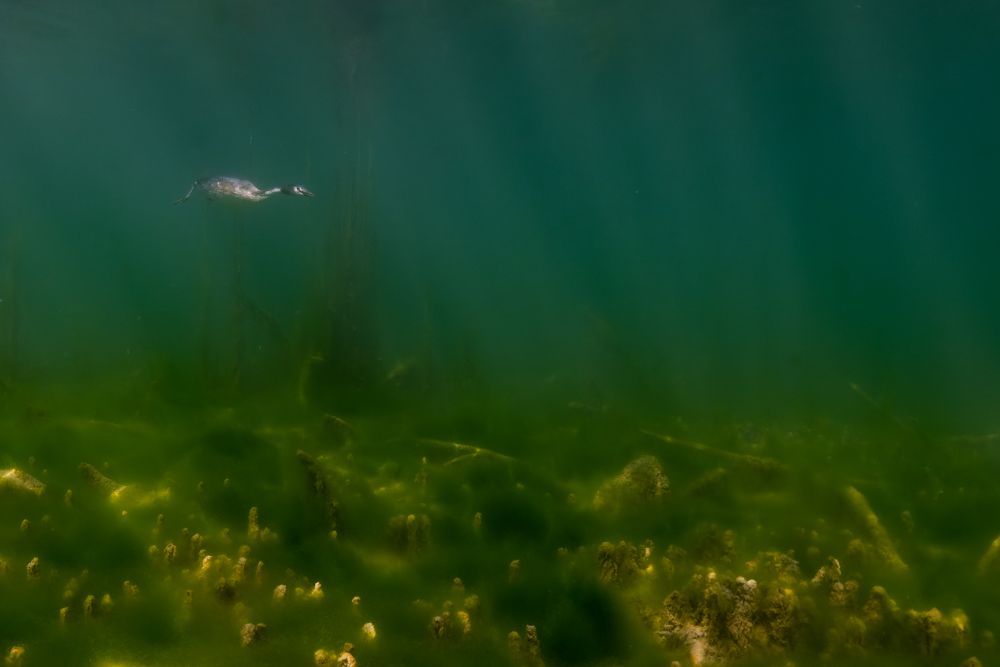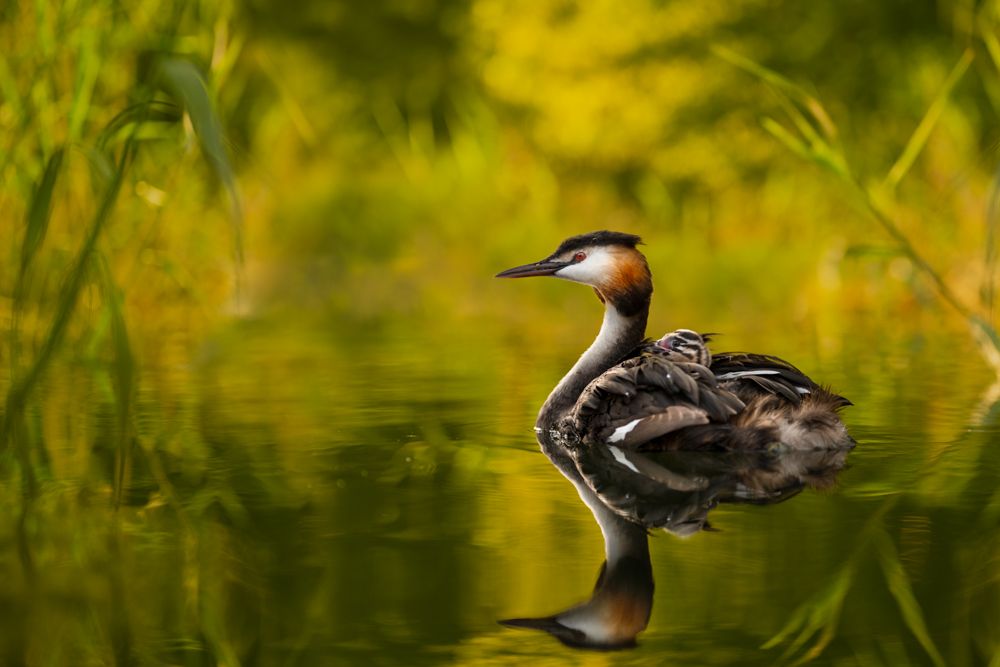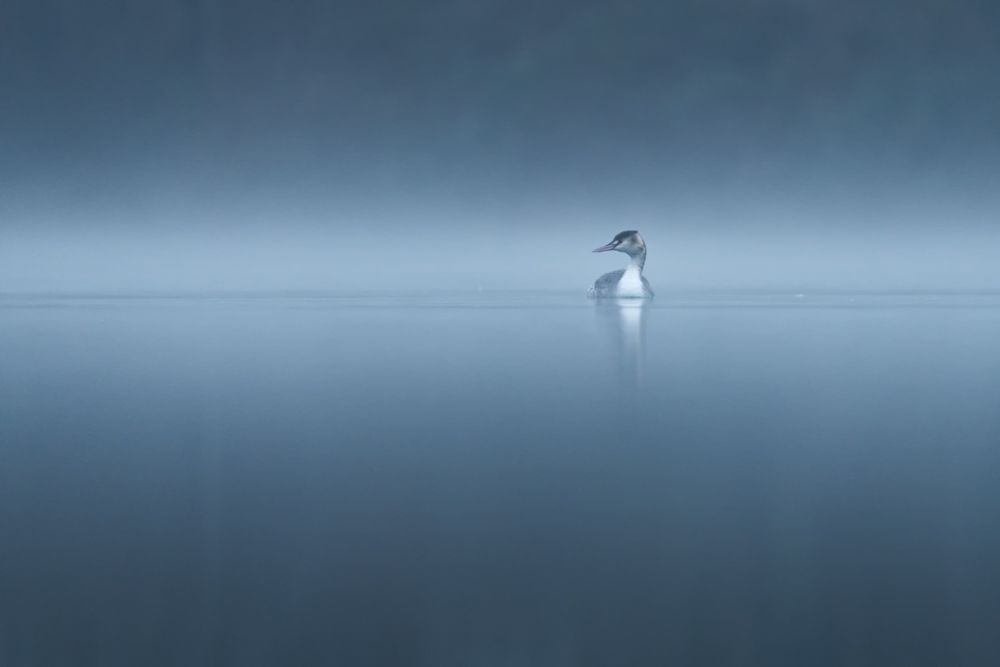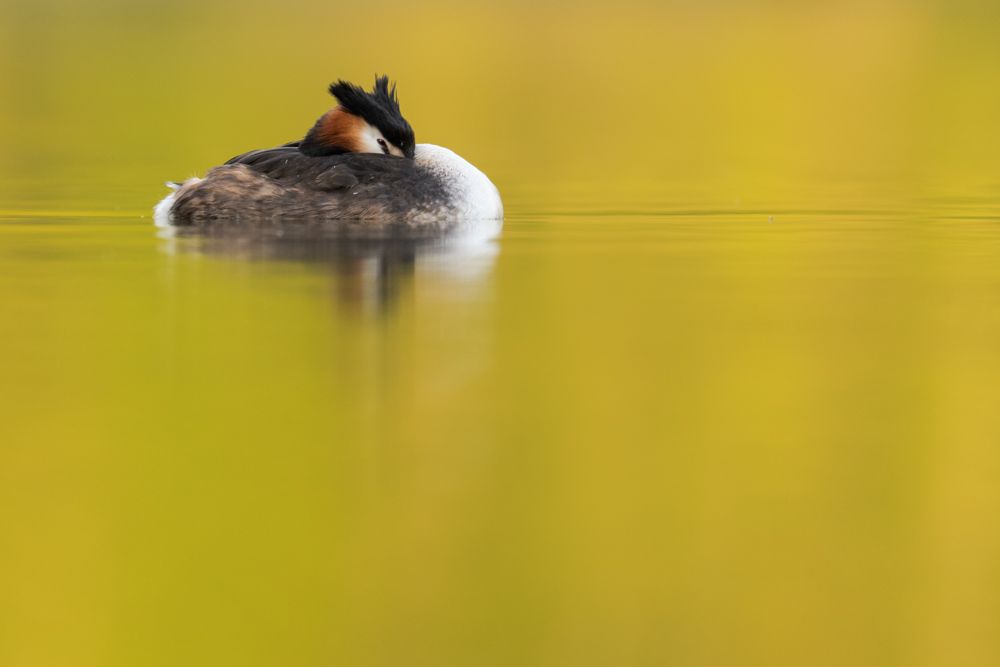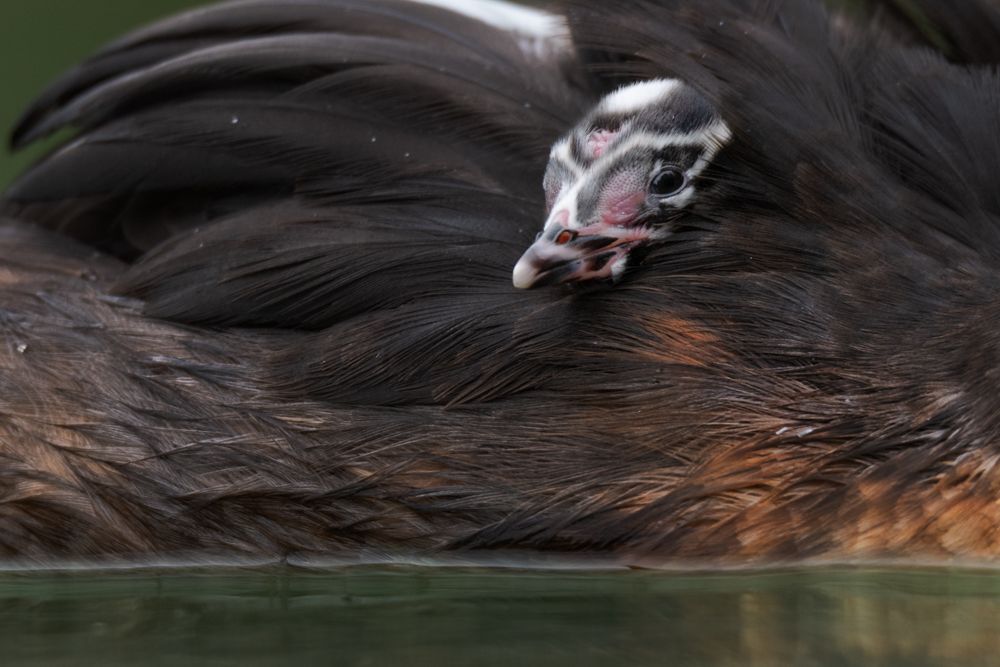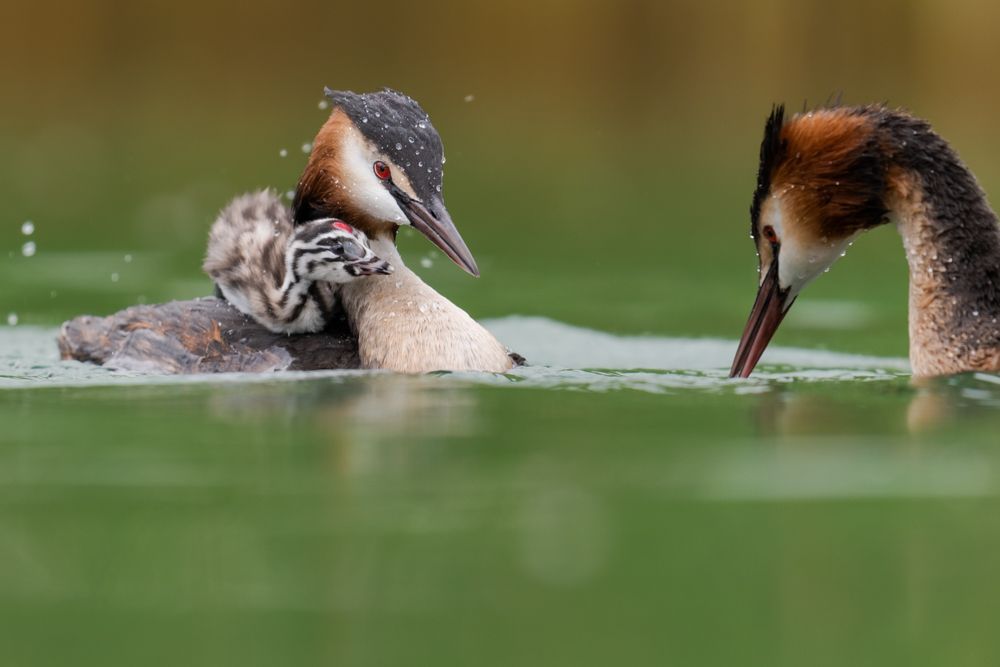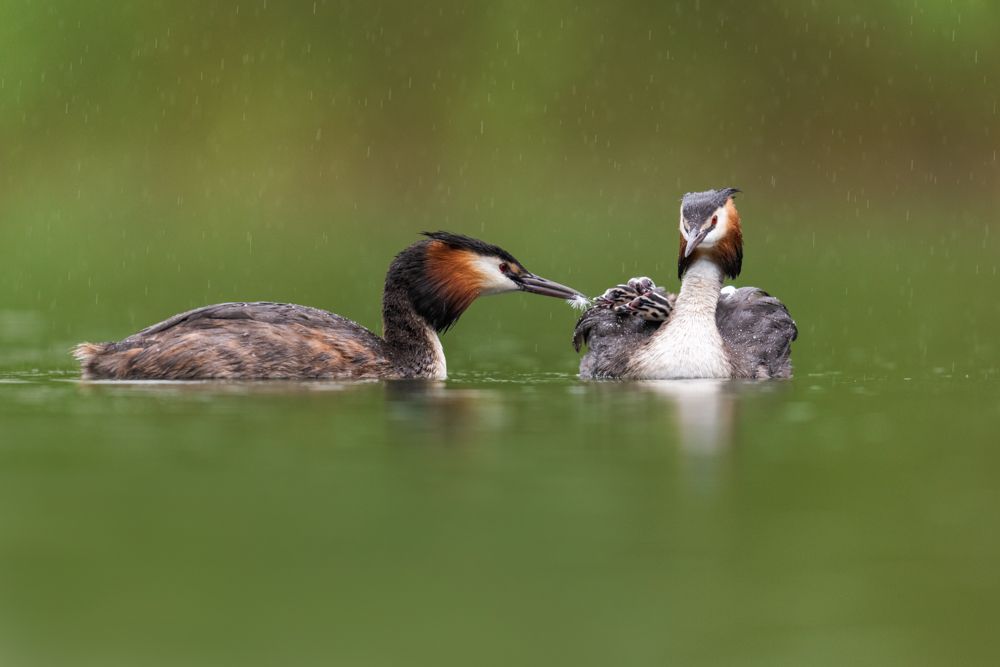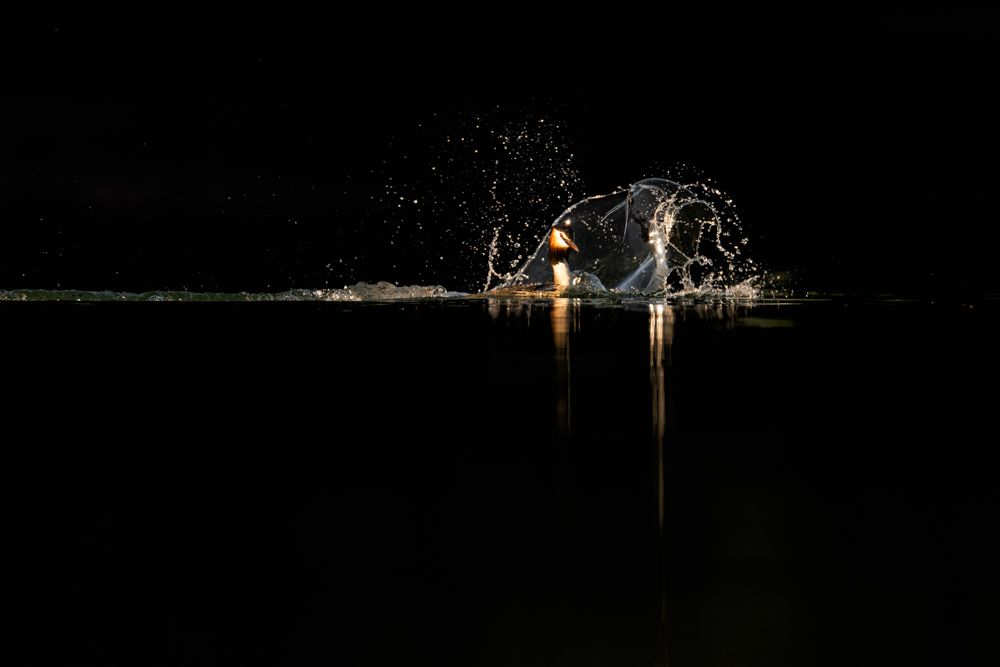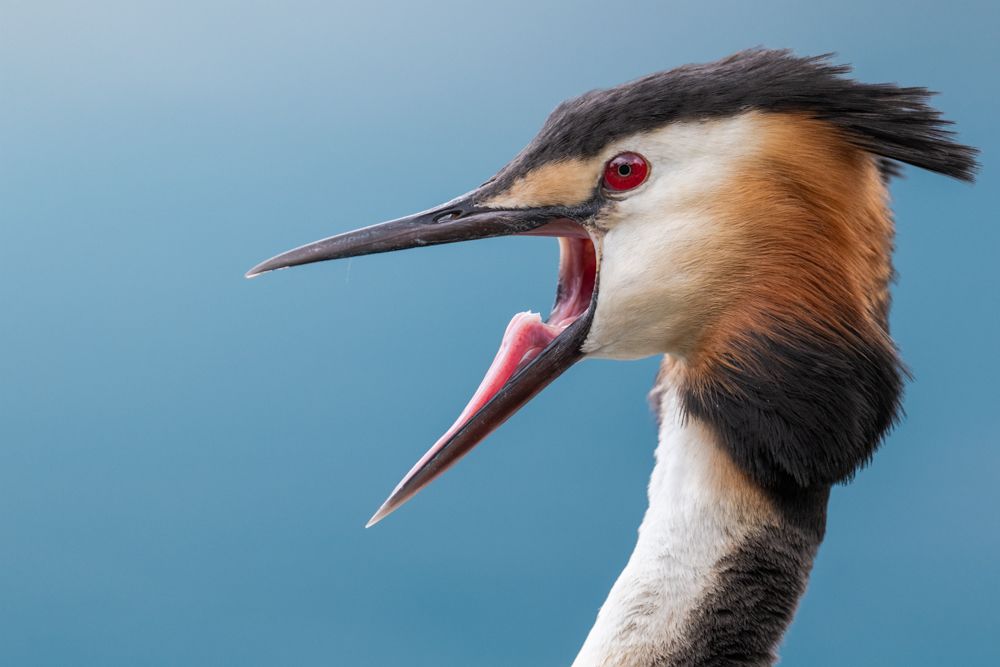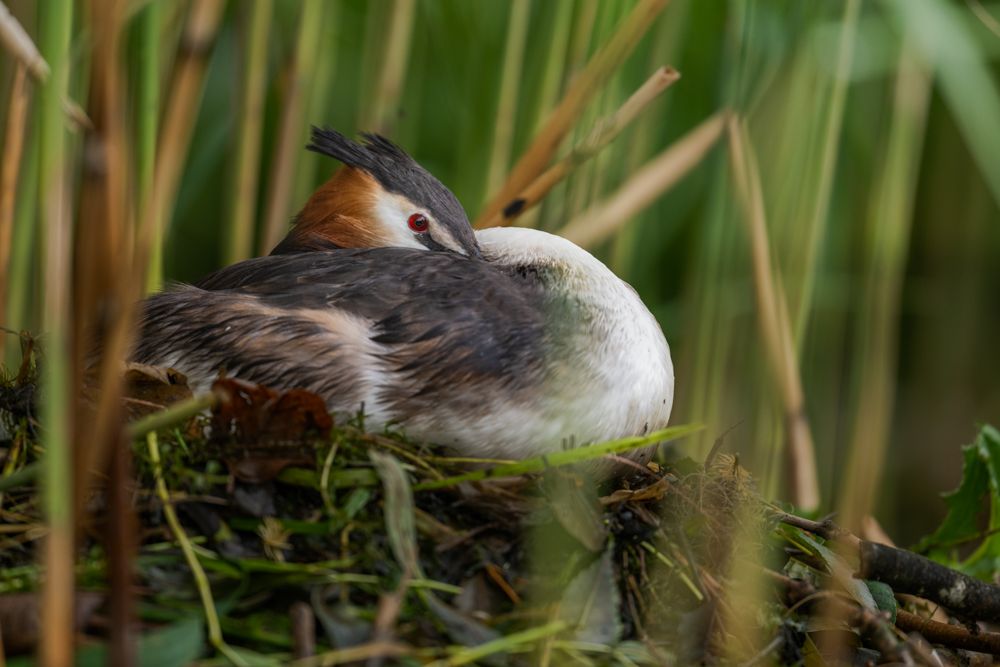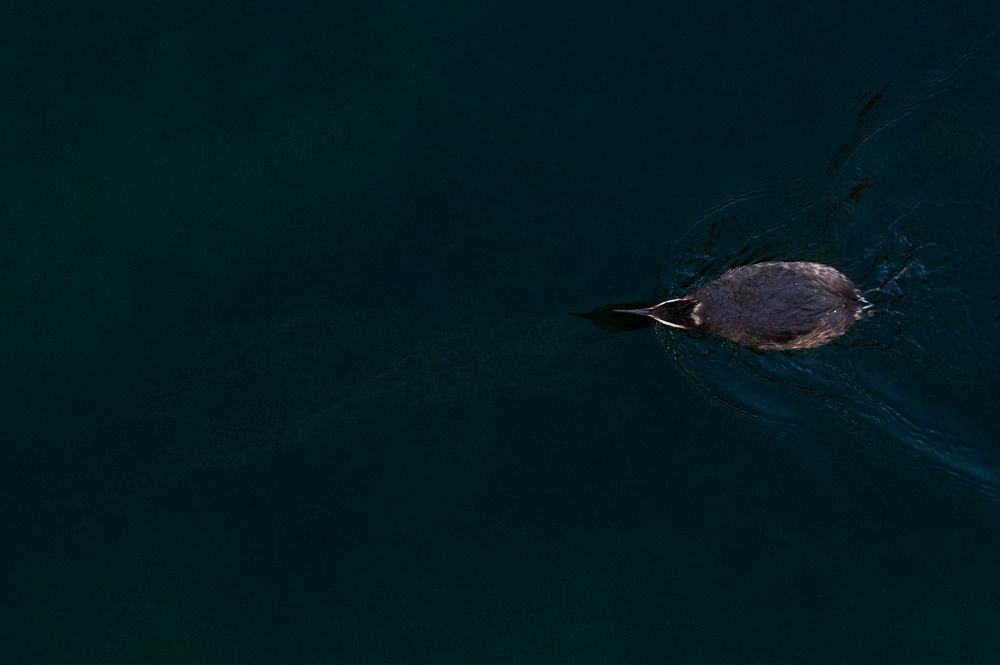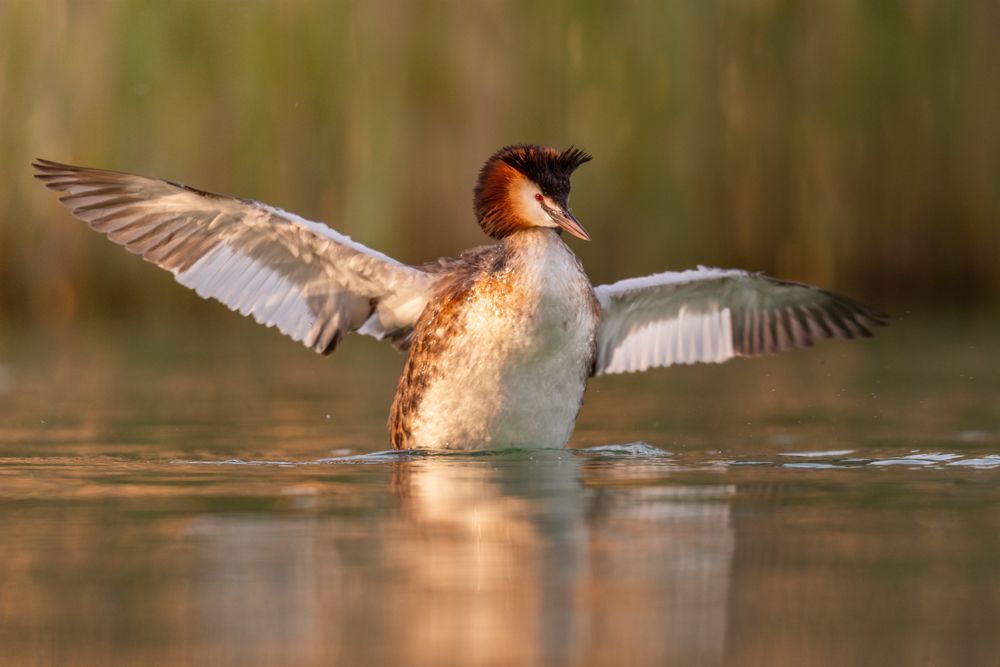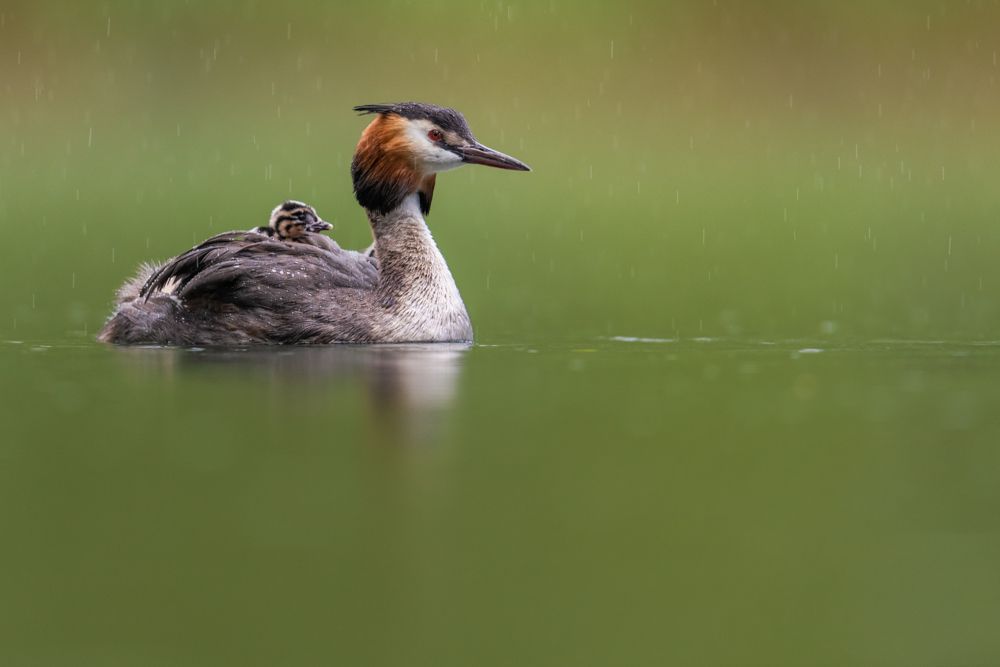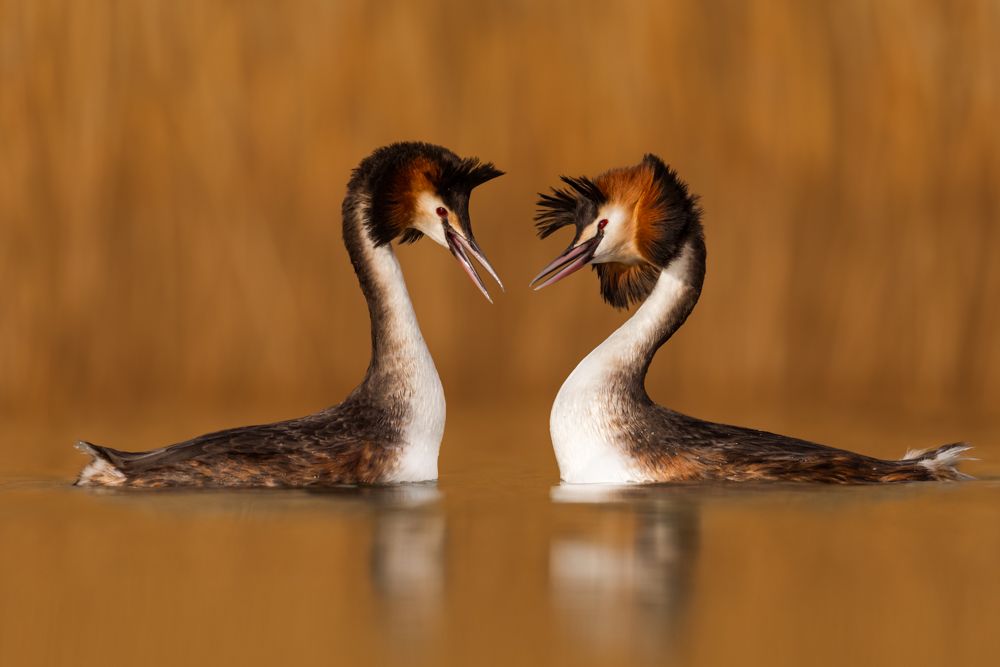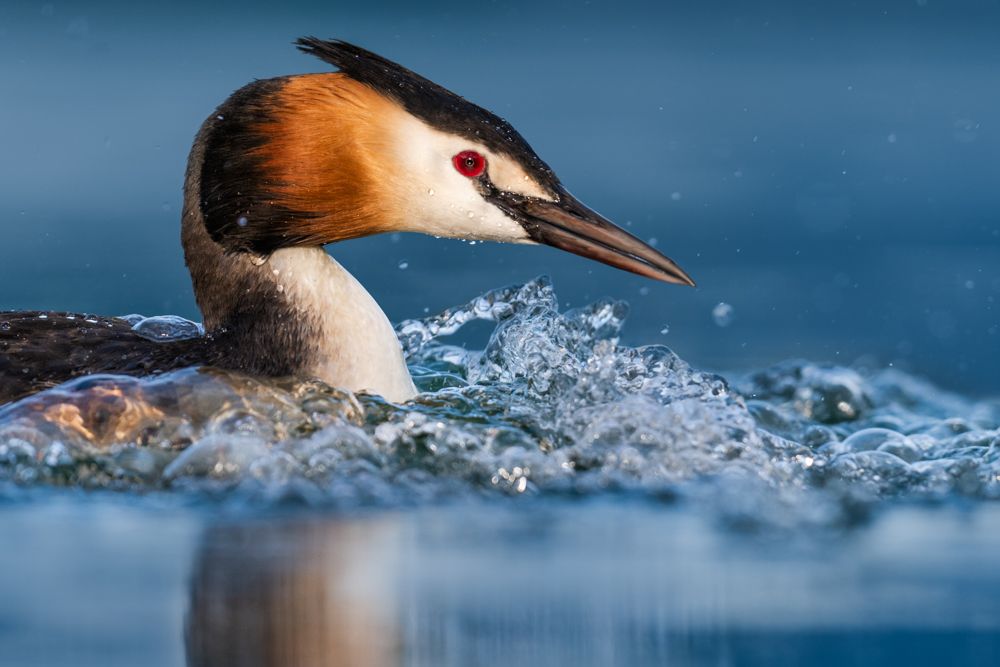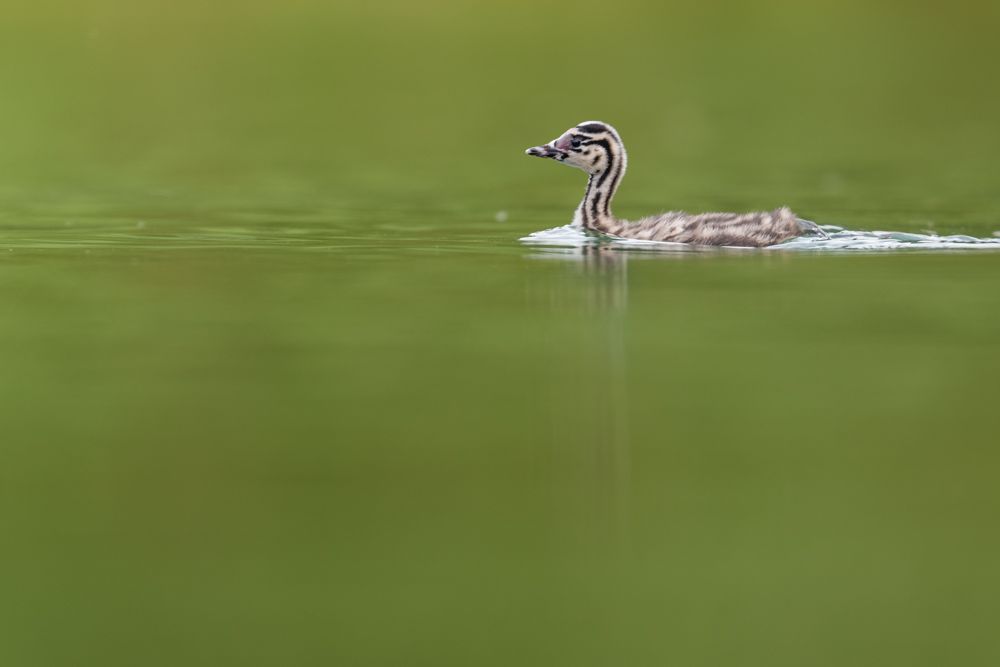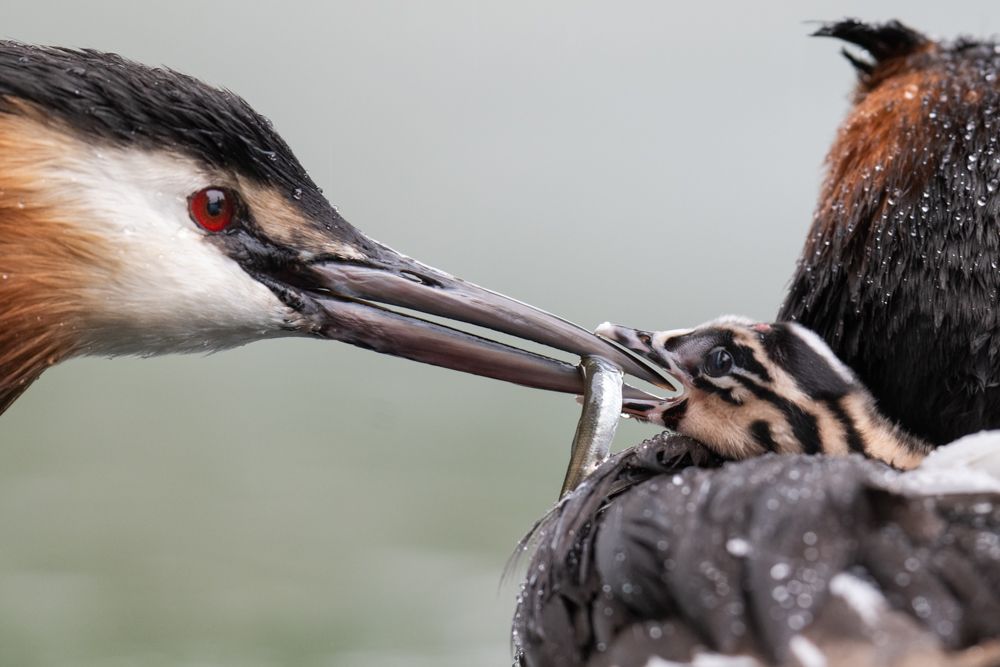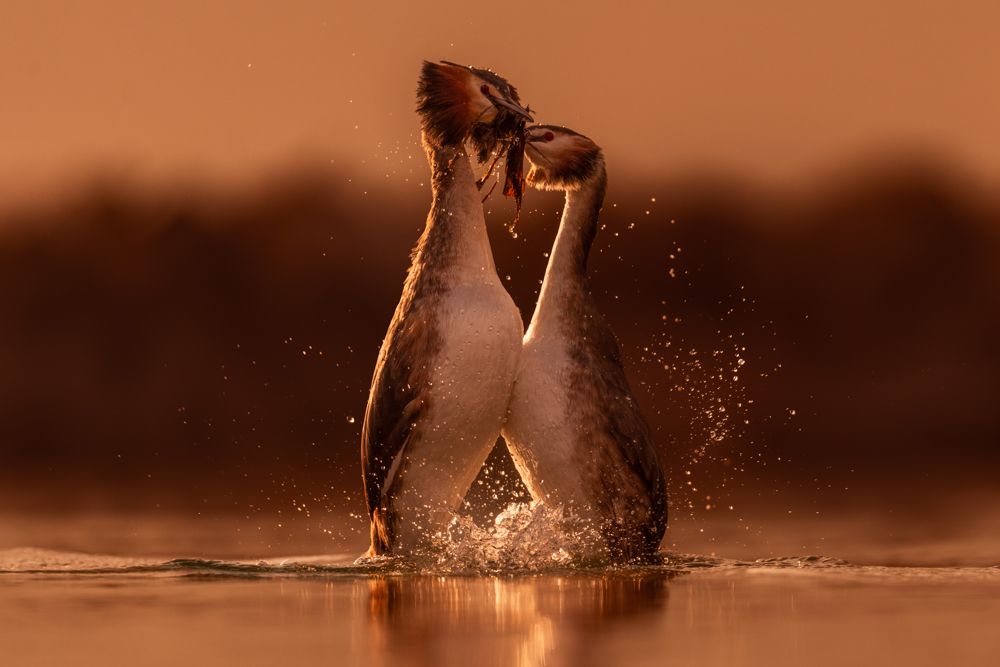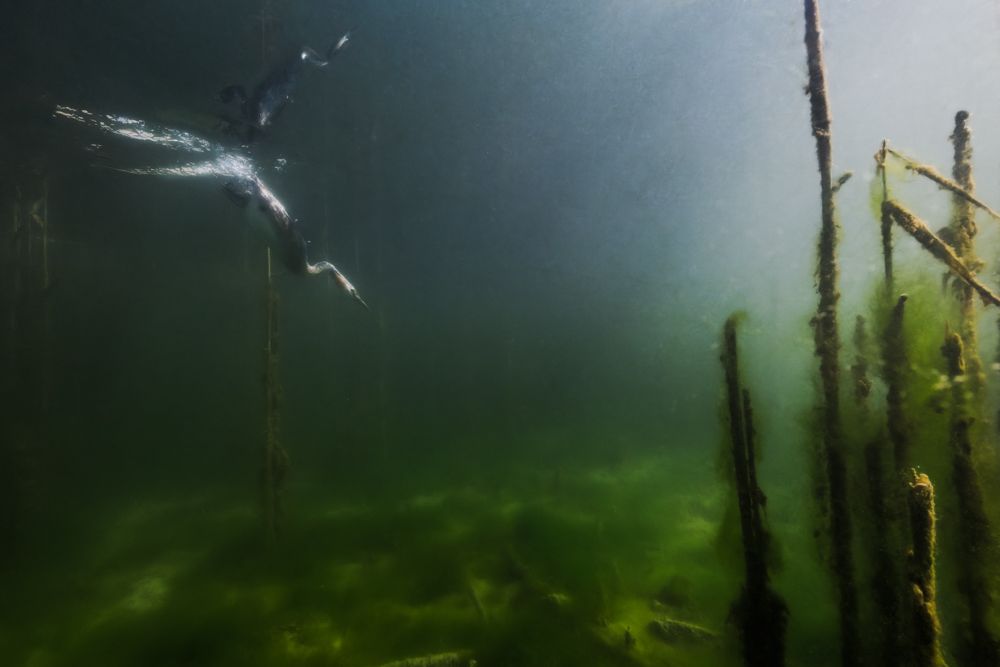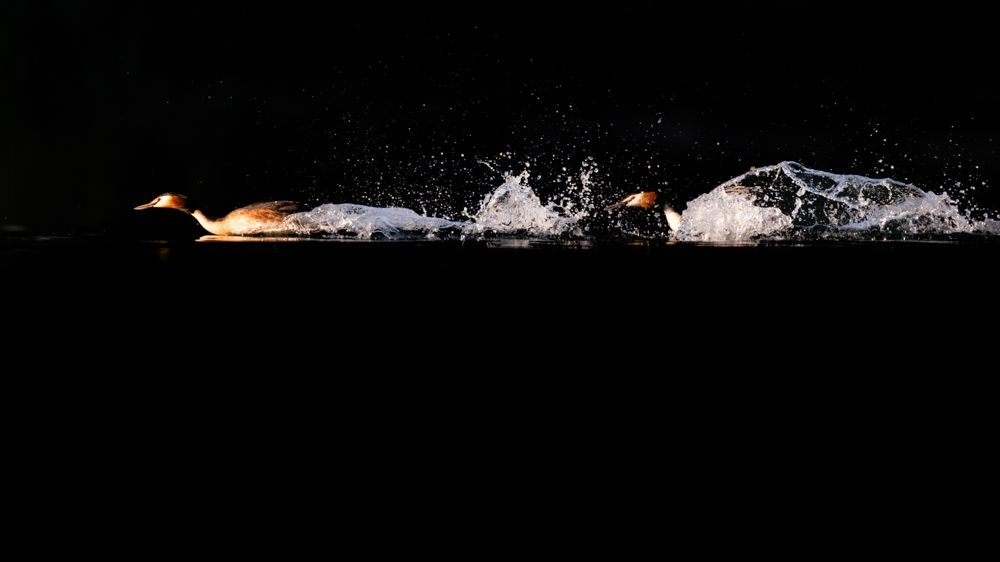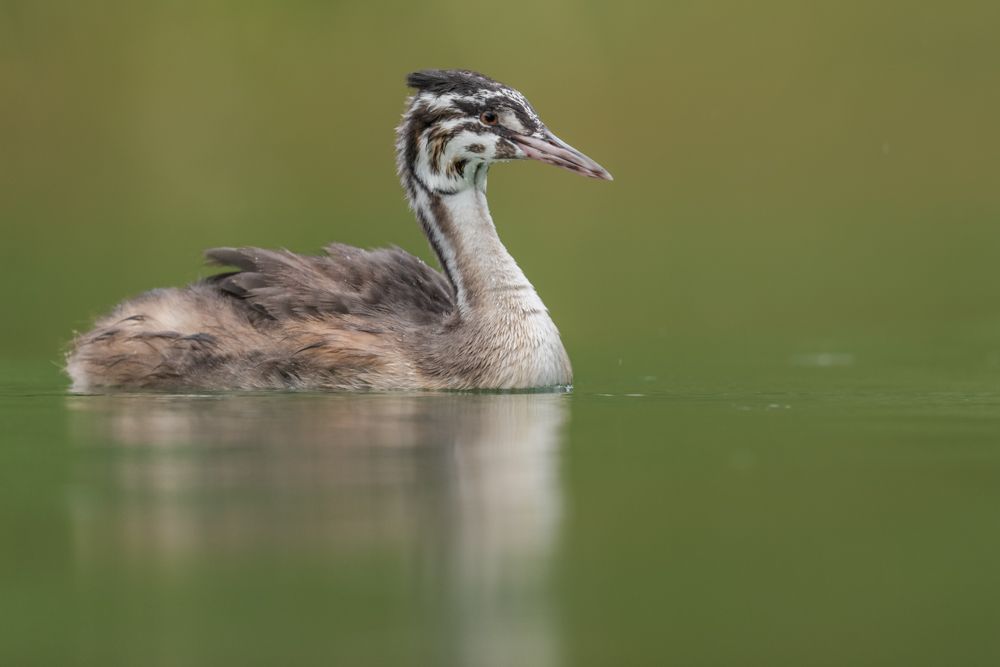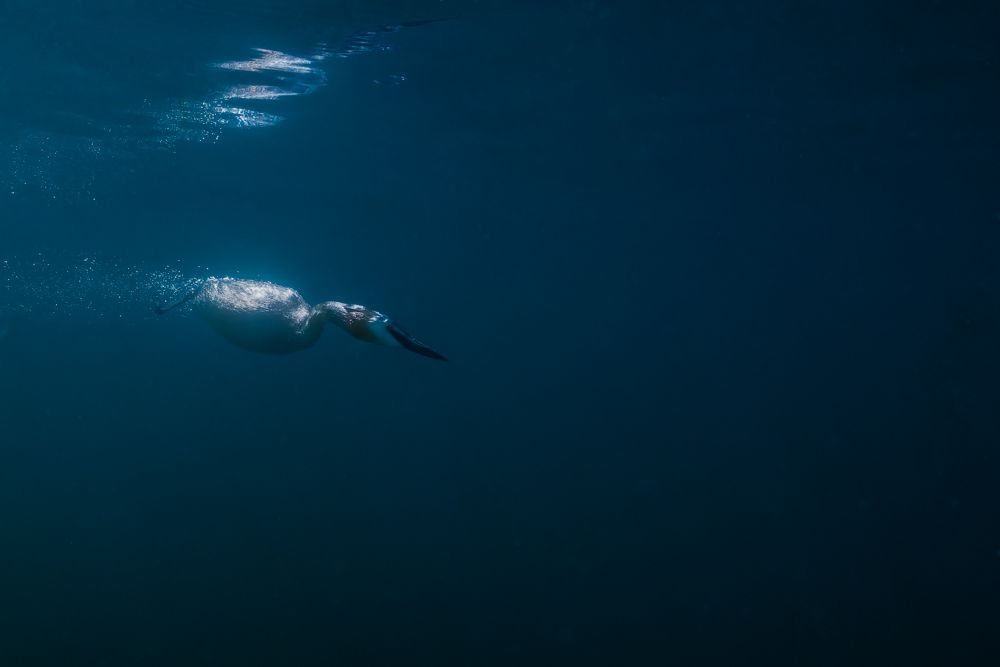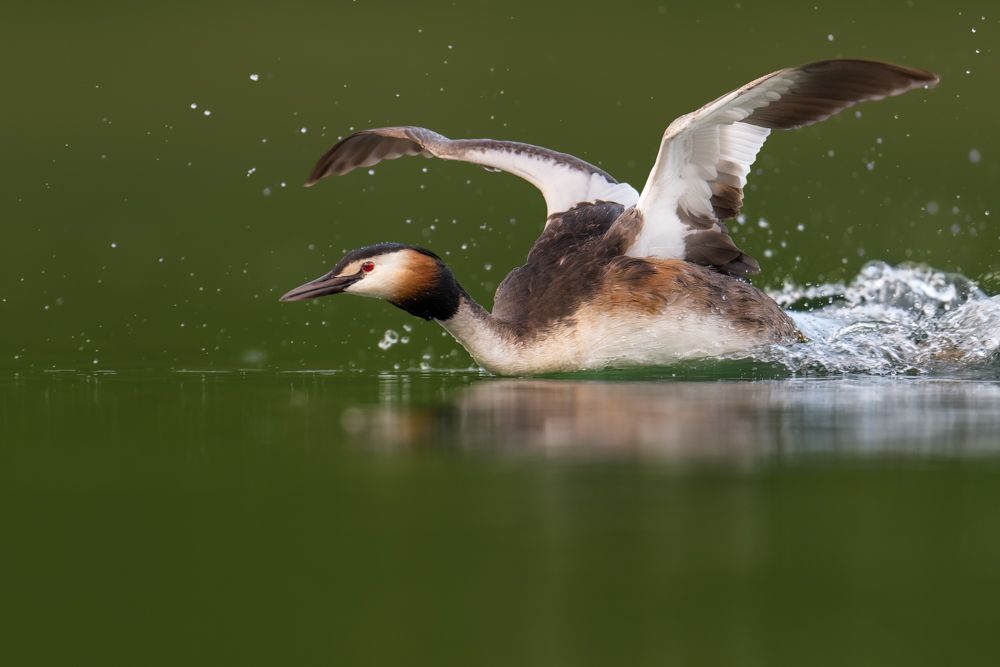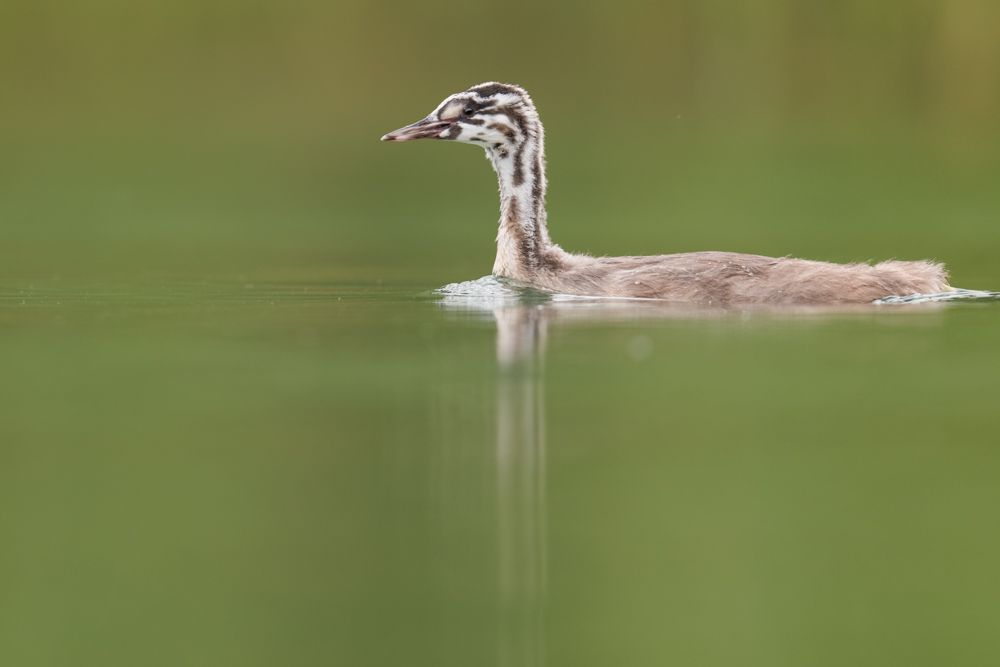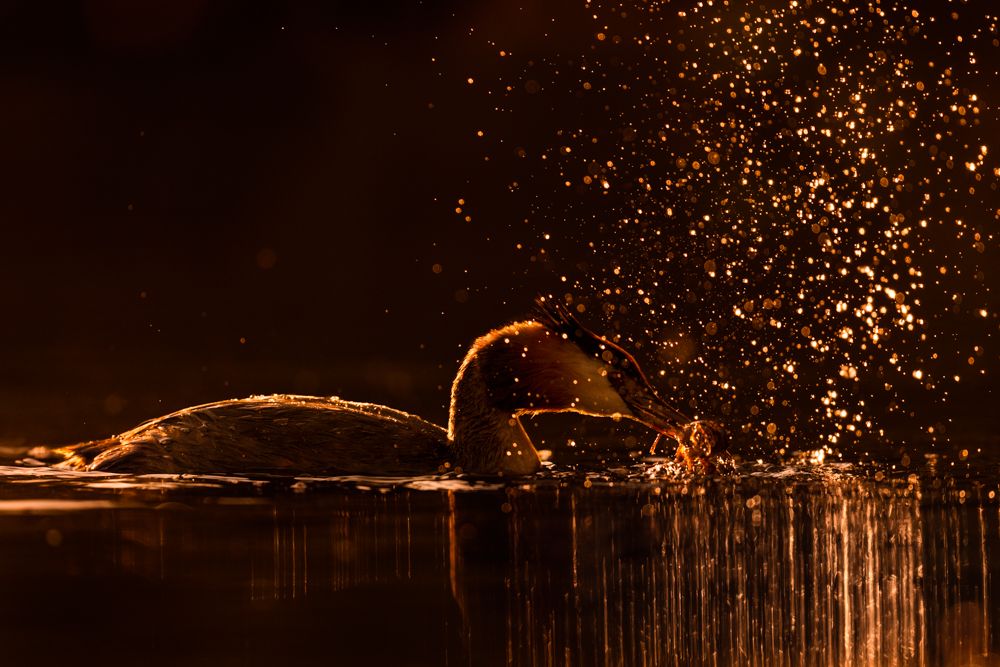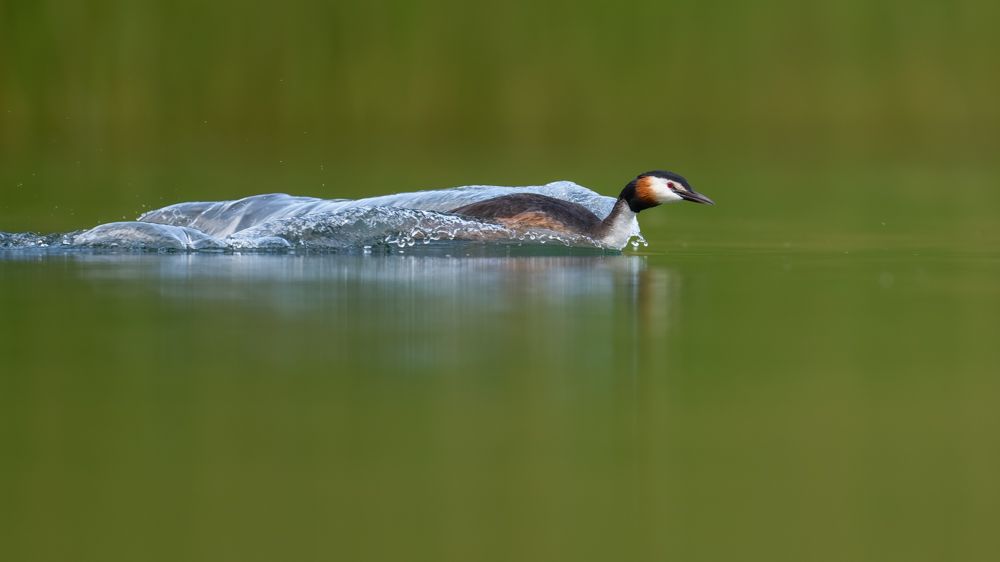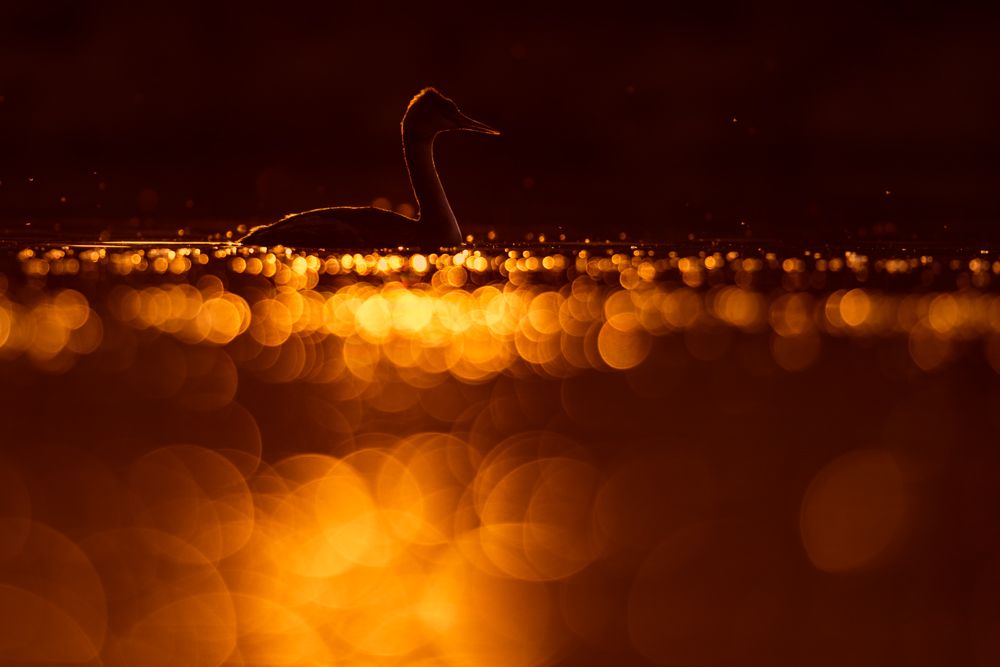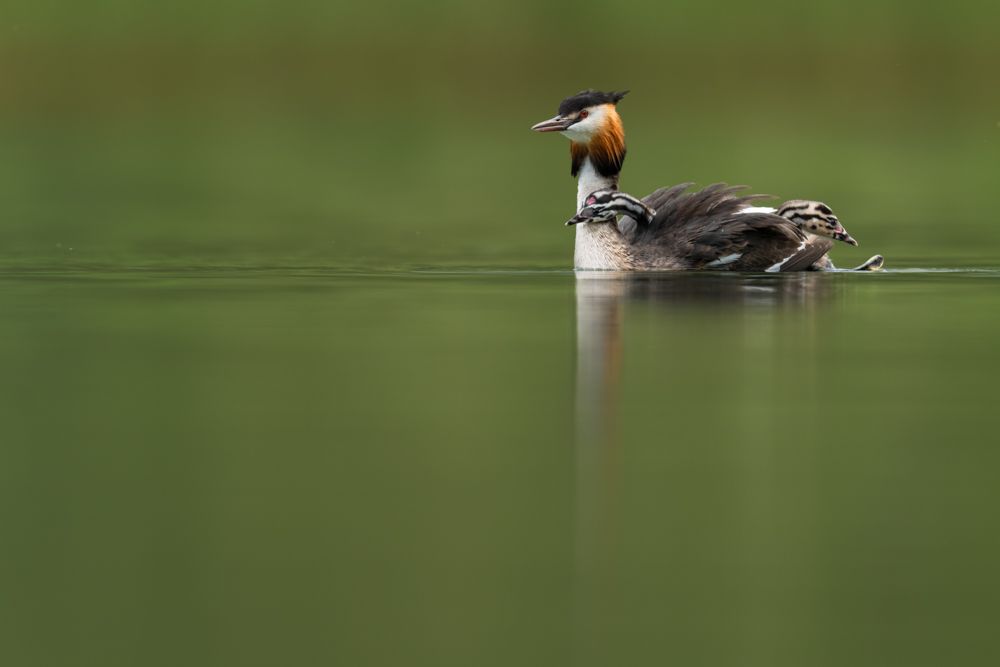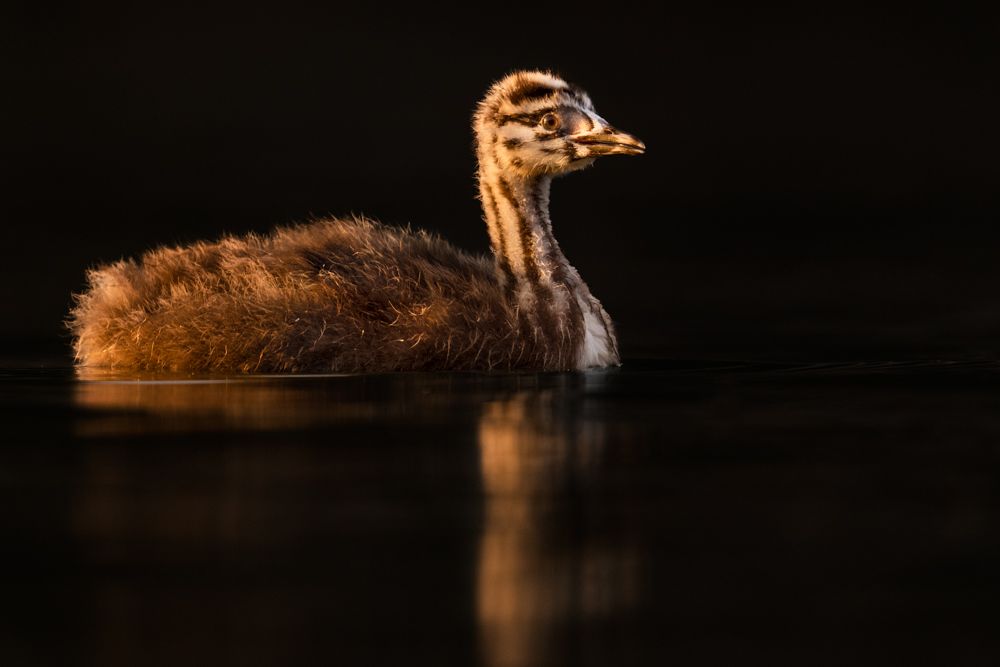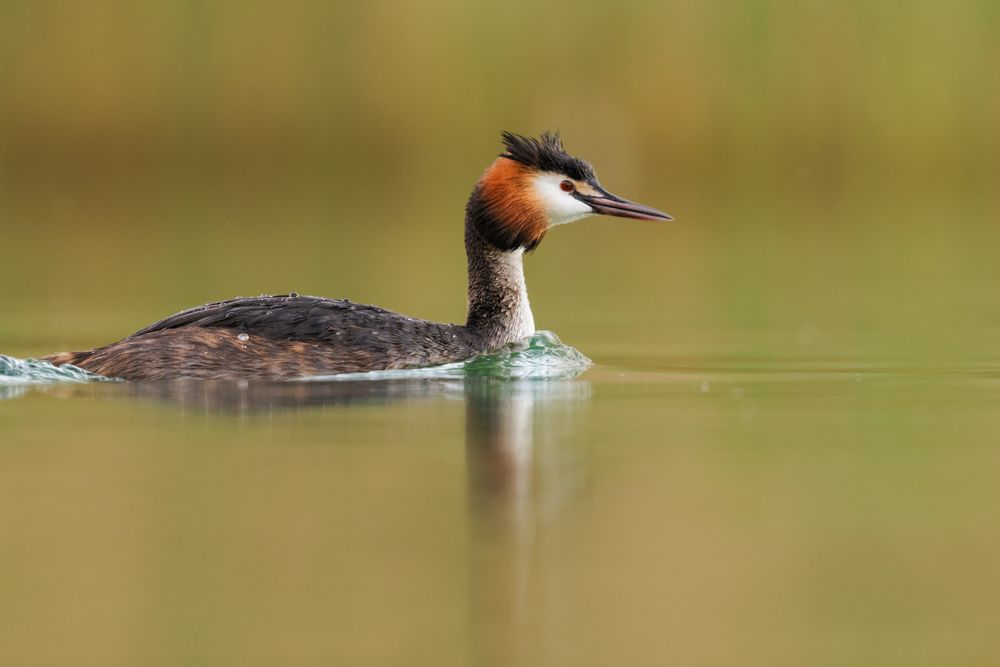Great-crested grebe (Podiceps cristatus)
Profile
Scientific name: Podiceps cristatus
Class: Birds
Order: Grebe-like
Family: Grebes
Length: 46-51cm
Wingspan: 85-90cm
Weight: 750-1200g
Distribution: Europe, Asia, occasionally Africa, Australia
Breeding population CH: 3'500-5'000 pairs
Habitat: Lakes
Migration behaviour: Resident birds and short-distance migrants
Apearance & Identification
Great crested grebes have a long, pointed beak and a relatively long neck. Males and females are not externally distinguishable. Both have black feather tufts on the head in their breeding plumage. The feathers at the back of the head are bright orange to brown and can be set up when they are excited. The eyes of great crested grebes are dark red. The body is mostly brown to black. The rump and neck are slightly lighter and, depending on the individual, almost white.
In late summer, the birds moult into a winter plumage. The tufts of feathers on the head are reduced. Head and the front of the neck are white except for the forehead. The forehead as well as the back of the neck are black. The body is coloured similarly to the breeding plumage, but both the back and the sides are less coloured and slightly darker. The sides show a little bit of white. The beak is slightly pink, but the eyes remain the same colour. In spring the great crested grebes moult back into their beautiful breeding plumage.
Risk of confusion
The great crested grebe can be identified quite easily in its breeding plumage. Only the red-necked grebe has certain similarities to the great crested grebe. However, it does not breed in Switzerland, but is only here in winter.
In winter, the two species can be identified by their size and beak colour. The red-necked grebe is slightly smaller than the great crested grebe and it has a yellow beak. Just as a reminder, the great crested grebe has a pink beak during winter.
Habitat
The Great Crested Grebe breeds in the reed belt of rather large lakes but also in slowly flowing waters. The Great Crested Grebe prefers waters with a rich fish population and it avoids smaller water types.
In winter it can also be found near reed-free shores. Many Great Crested Grebes spend a large part of the winter in the middle of the lake.
Distribution in Switzerland
The great crested grebe is particularly common in the Swiss plateau (Mittelland) and Ticino. With 3’500 to 5’000 breeding pairs it isn’t a rare sight at the larger lakes. In the Alps though, the great crested grebe is only very sparsely distributed. Here, breeding records are limited to the Engadine and Rhone valley.
In winter, more individuals from more northerly breeding areas move to our waters. In recent years, the winter population has been between 30’000 and 45’000 individuals. These large fluctuations are probably mainly due to big drops and rises in the fish populations. For example, fish kill due to very warm summers or overfishing can have a major impact on the winter population of the great crested grebe. If this is the case, great crested grebes seek waters richer in fish.
Diet
The great crested grebe feeds exclusively on fish. It prefers rather small fish. It captures these by diving. The streamlined shape enables it to chase the fish under water.
The diving time of the Great Crested Grebe is in most cases not longer than 30 seconds. It reaches a depth of up to 6m. Great crested grebes that were caught in fishing nets show a maximum diving depth of up to 40m!
Breeding behaviour
The great crested grebe feeds exclusively on fish. It prefers rather small fish. It captures these by diving. The streamlined shape enables it to chase the fish under water.
The diving time of the Great Crested Grebe is in most cases not longer than 30 seconds. It reaches a depth of up to 6m. Great crested grebes that were caught in fishing nets show a maximum diving depth of up to 40m!
In most cases about 2 to 3 young hatch. The remaining eggs are either unfertilized or have not survived. The young leave the nest after a short time and are picked up by their parents on their backs. Well hidden in their feathers, the young are fed with fish from the partner bird. The bigger the young become, the more often they leave the protective backs of their parents and swim around beside their parents. However, the young are still fed with fish.
After about 7 weeks the young are able to fly. In the meantime, they have learned to dive themselves and are no longer dependent on their parents. From this time on the young birds leave the territory of their parents.
Migration behaviour
The breeding great crested grebes stay in Switzerland all year round. In winter, however, they are joined by other individuals from the north.
How to photograph great crested grebes
Great crested grebes can be observed on all major waters in Switzerland. In most cases, with a little patience, they can be photographed even without camouflage. The period between spring and mid-summer is best suited for photographing great crested grebes. This is when they are in their breeding plumage and show their unique courtship behaviour. Colonies are slightly better suited for photographing great crested grebes. The chances of territorial fights and courtship is much higher there. In the centre Champ-Pittet, great crested grebes can be photographed very easily. However, there you have to take photos from a slightly elevated wooden path and therefore do not reach eye level.
Other species
Resources
The population figures, length, weight and wingspan correspond to the data of the Vogelwarte Sempach
Information on behaviour, distribution etc. is based on my own observations and was supplemented with information from the following sources:
The Birds of Switzerland (2007) Lionel Maumary et al.
Swiss Breeding Bird Atlas 2013-2016
The Cosmos Bird Guide (2017) Lars Svensson et al.


